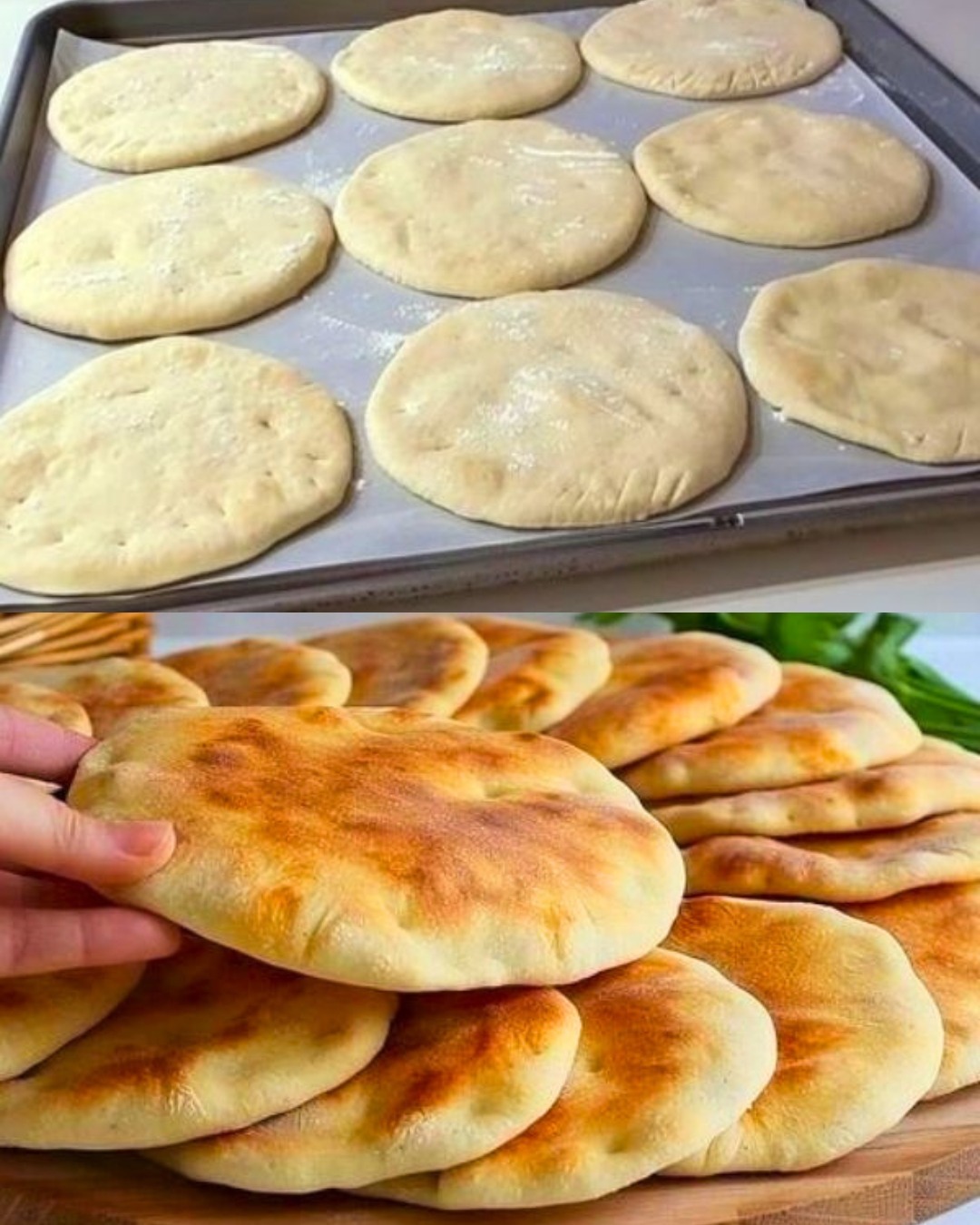ADVERTISEMENT
1. Preparing the Dough:
Sift the Flour:
Begin by sifting 450 grams of flour into a large mixing bowl. This step ensures that your flour is light and free of lumps, which is crucial for achieving a smooth, pliable dough.
Add Oil, Salt, and Water:
Add 2 tablespoons of vegetable oil and a pinch of salt to the flour. Gradually pour in 240 ml of hot water while stirring the mixture with a wooden spoon or your hands. The hot water helps to bind the ingredients and creates a dough that’s easy to work with.
2. Kneading and Resting the Dough:
Knead the Dough:
Once the ingredients are combined, transfer the dough onto a lightly floured surface. Knead it for about 5-7 minutes until it becomes smooth and elastic. The kneading process is essential for developing the gluten, which gives the bread its structure and chewiness.
Form a Ball:
Shape the kneaded dough into a ball and place it in a breakfast bag or wrap it in plastic wrap. Let it rest for 20 minutes. Resting the dough allows the gluten to relax, making it easier to roll out later.
3. Shaping and Resting the Dough Balls:
Divide the Dough:
After the initial rest period, divide the dough into eight equal parts. Shape each part into a small ball.
Rest Again:
Cover the dough balls with a breakfast bag or a damp cloth and let them rest for another 10 minutes. This second rest period ensures that the dough is easy to roll out without springing back.
4. Rolling Out the Dough:
Roll Thin:
On a lightly floured surface, roll each dough ball into a thin sheet. Aim for a diameter of about 6-8 inches, depending on how thick you prefer your bread substitute. The thinner the dough, the crisper the bread will be.
5. Cooking the Bread Substitute:
Roast in a Dry Pan:
Heat a dry, non-stick pan over medium-high heat. Place one rolled-out dough sheet in the pan. Cook for about 1-2 minutes on each side, or until golden brown spots appear. The dough will puff up as it cooks, creating a light, airy texture.
Cool and Serve:
Once cooked, remove the bread from the pan and let it cool slightly on a wire rack. Repeat the process with the remaining dough balls. You can cut the bread sheets in half crosswise and fill them with your favorite ingredients for a delicious snack or meal.
Serving Suggestions
Serve this bread substitute with a variety of dips like hummus, guacamole, or tzatziki.
It also makes a great base for sandwiches or as a side with soups and salads.
Cooking Tips
Ensure your pan is hot before adding the dough to get a nice, even cook.
If you prefer a softer bread, roll the dough slightly thicker.
Nutritional Benefits
Low in Fat: This bread substitute is low in fat and can be made with whole grain flour for added fiber.
No Yeast or Added Sugars: It contains no yeast or added sugars, making it a healthier alternative to many store-bought breads.
Dietary Information
Vegan: This recipe is vegan and can be made gluten-free by using a gluten-free flour blend.
Dairy and Egg-Free: It’s also free from dairy and eggs.
Storage
Room Temperature: Store any leftovers in an airtight container at room temperature for up to 2 days.
Refrigerator: For longer storage, keep the bread in the refrigerator for up to a week.
Freezer: Freeze for up to 3 months. Thaw at room temperature before serving.
Why You’ll Love This Recipe
Quick and Easy: This bread substitute is quick and easy to make, requiring just a few basic ingredients.
Versatile: It’s versatile enough to pair with a variety of dishes and can be customized with different herbs and spices to suit your taste.
Healthier Alternative: It’s a healthier alternative to traditional bread, making it perfect for anyone looking to cut down on processed foods.
Conclusion
Enjoy this quick and easy bread substitute that’s perfect for any occasion. Whether you need a speedy snack or a light meal, this recipe will satisfy your cravings without the fuss of traditional bread-making. Bon appétit!

